There's strong suggestions that social housing should be the leading stimulus for construction after COVID-19, that the government invest in housing for those in housing stress and the homeless. That’s called public housing, but the public has lost all faith in the government to deliver anything for the public, so we call it social housing now.
Delving back a hundred years we can find plenty of lessons for today in a superb example of the first public housing built in Australia by a state government. Daceyville. Also known as Dacey Gardens. Six kms south of Sydney's centre near Kingsford and the UNSW.
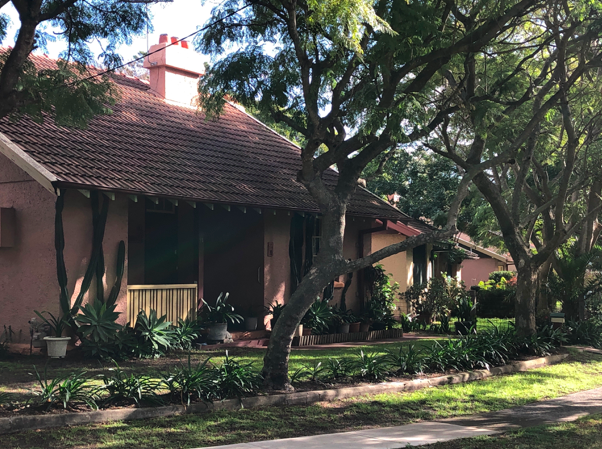
1909. The Royal Commission For The Improvement of Sydney suggests that workmen's housing should be built in the suburbs, away from the city where the housing is crowded, unhygienic and run by exorbitant private landlords who extort so much money from tenants that every family takes in a lodger or three to defray the costs. Not unlike today's illegal multiple occupancies in apartments.
1910. The words turned into actions with the election of a Labor government. Colonial Secretary John Rowland Dacey leads the way, arguing: “The day is past, when free Australians were content to be herded together in terraces of mere dog boxes…the time has come when we should create a Garden City and provide houses of an up-to-date character at the lowest possible rental”.
Of course, the conservatives fiercely opposed the government intervening in what was a wholly private rental market. Charles Wade, opposition leader thought the ideas socialist and called it Audaciousville. Conservatives today would call Daceyvile.
1912. Dacey champions his Housing Act to enable the government to be both constructor and landlord of housing. It also establishes the Housing Board, precursor to the Housing Commission and Housing NSW. Sadly, Dacey dies just two weeks before the Housing Act was passed; in a magnanimous act of attribution, the suburb is named after him.
A competition is run and won by Samuel George Thorp, a young architect with both good and bad outcomes. On the up he was made a partner with James Peddle (and later H. Ernest Walker) to form Peddle Thorp and Walker, now PTW architects. On the down he was victim of Australia's national pastime of holding architectural competitions, and then ignoring the winner, stealing the ideas and bastardising the outcome.
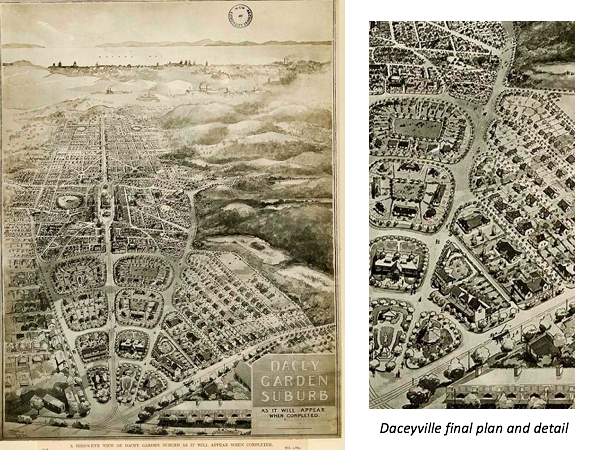
Plans are drawn by the superbly named William H Foggitt under George McCrae. The inspiration comes from Britain's Garden City movement, particularly Letchworth in Hertfordshire England. The aim of Daceyville is to provide low cost housing for working class people in a planned garden setting, at a density to promote fresh air. Later that year, John Sulman in association with John Hennessy makes a series of modifications, suggesting major public buildings be added to the plan on broad Parisian avenues.

1913. Construction is well under way through the sand dunes; roads laid out with the new-fangled kerb and gutter, and first-time sewer and electricity to every block. At one stage two homes a week are completed. Two early streets are named Astrolabe and Boussole, after ships commanded by La Peruse (the French explorer just pipped into Botany Bay after the first fleet in 1788).
The Daceyville tram line opens with connections from Circular Quay via Waterloo, part of a great spider web of tram lines installed by the Labor government. (The line is closed in 1957 by Joe Cahill, perfectly remembered for his urban bastardry by the freeway that blocks out the harbour).

Foggitt designs houses in the fashionable Queen Anne style, now referred to as Federation: larger windows in more of the rooms to promote sun, light and health, an increasingly preferred design idea. Large verandas are a feature as sleep outs in warm weather. But it is the large gardens surrounding every house that gave that gives Daceyville it's early success for residents and visitors. Maintaining the gardens built over sand is so water demanding that occasionally the government had to step in to help the residents with their water bills.
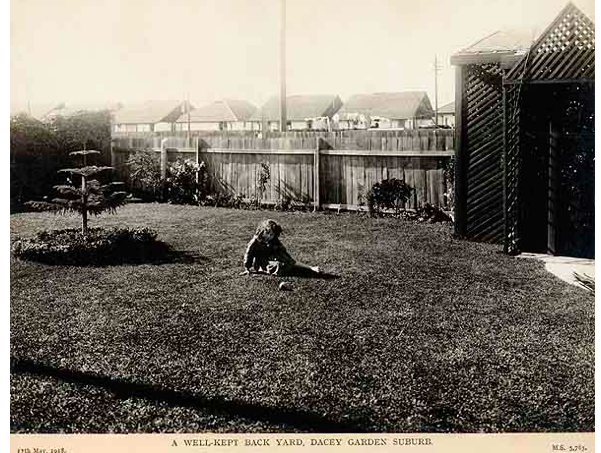
1914. Charles Reade of the British Garden Cities and Town Planning Association criticises the suburb for “lacking anything corresponding to a cul-de-sac or narrow town planning road of modern times”. Foggitt revises Sulman’s plans, introducing ‘smaller, curvier and friendlier’ streets, including Colonel Braund Crescent, Australia's first planned cul-de-sac. Comparing the plans today it’s the softer unknown Foggitt that triumphs over the formal renowned Sulman.
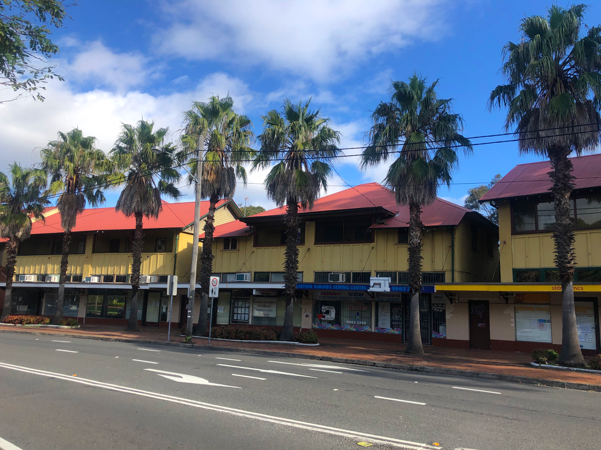
1916. The travails of World War One have an enormous impact on the suburb’s character and future. 50 war widows receive housing in the suburb, and it change from a worker suburb into one associated with returned serviceman, especially when the suburbs newly completed streets start to be named after men who served in the great war.
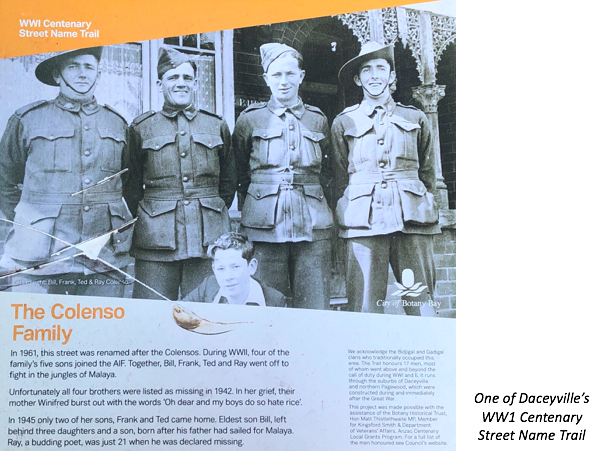
1918. After the war, the working-class rental scheme became less important than the need to house thousands of returned soldiers. Daceyville’s southern end is subdivided and privately sold off by the conservative NSW Nationalist party, introducing a new housing policy to provide financial assistance to buy existing homes or purchase land for building. Conservatives are allergic to public housing.

1920. Daceyville’s construction of rental property finishes with just 315 of the intended 1,473 cottages built; but public amenities are a baby health clinic, a police station, a large community hall, a public primary school and six shops.
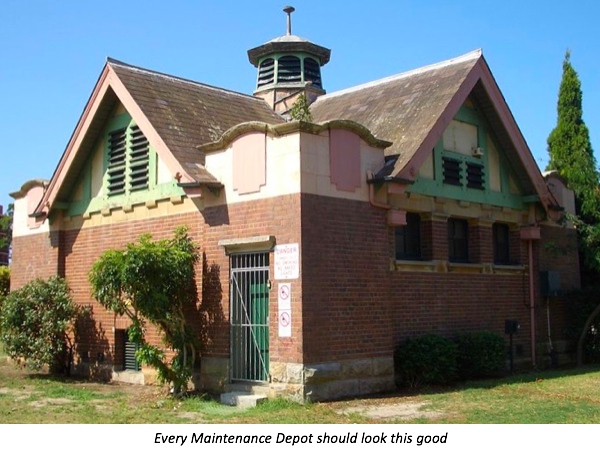
1965. The newly elected Askin conservative government, in a fit of pre-Thatcher pique, sells off 23 of the houses reducing the amount of public housing in the estate.
1970. Daceyville is no longer a model suburb. The lack of maintenance, a hallmark of the NSW Housing Commission, leaves aged homes in desperate need of modernisation and the overgrown green front gardens now grow cars. Daceyville’s position close to the city puts it on the path of a proposed extension of the Eastern Suburbs Railway out to Kingsford.
1974. The Askin government proposes bulldozing the entire suburb and replacing it with their preference for high rise buildings and walk up apartments, as they successfully do in Waterloo. The Daceyville Preservation Society is formed and the Builders Laborers Federation imposes a Green Ban, led by Jack Mundey (only recently passed – his obituary can be found here).

1978. The National Trust recognises Daceyville’s historical significance and the Housing Commission,
now under Neville Wran’s Labor government looks at various options for the suburb and settles on a plan that retains Daceyville's character while simultaneously increasing the suburbs housing stock, raising the density from one of low suburbia to something that better matched to the available services and ideal location.
1988. Professional heritage studies are undertaken by Robertson and Hindmarsh, and a far better maintenance regime is undertaken as well as insertion of new buildings within the existing fabric.

Today. The majority of the houses are still in the ownership of Housing NSW, home to an aging population, in a gently aging suburb. Daceyville is one of Australia's supreme examples of the delights of gardens suburbia; but it also stands as a warning of how hard it is to interest governments in public housing. What chance public housing now in NSW? Buckleys and none as the WW1 veterans would say.
plus 1 / plus one / +one is a collective of designers and artists promoting sustainability and Australian design. You can contact +one at plus1.plusone.one@gmail.com.

